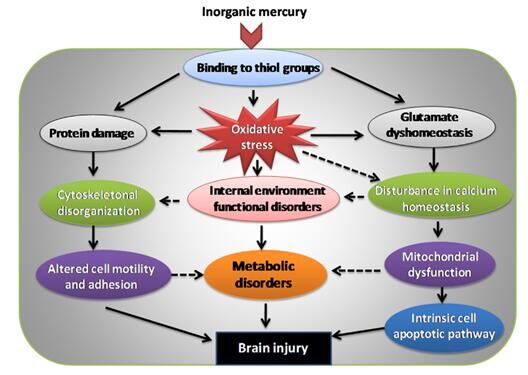作 者:Wang, Y.Y., Wang, D.Z., Lin, L., andWang, M.H. 影响因子:3.512
刊物名称:CHEMOSPHERE
出版年份:2015
卷:119 页码:1126-1133
Mercury is a ubiquitous environmental contaminant which exerts neurotoxicity upon animals.Nevertheless, the molecular mechanisms involved in inorganic mercury neurotoxicity are unknown.We investigated protein profiles of marine medaka, chronically exposed to mercuric chloride usingtwo-dimensional difference gel electrophoresis (2D-DIGE) and matrix-assisted laser desorption/ionization tandem time-of-flight mass spectrometry (MALDI-TOF-TOF MS) analysis. The mercury accumulation and ultrastructure were also examined in the brain. The results showed that mercury was significantly accumulated in the treated brain, and subsequently caused a noticeable damage. The comparison of 2D-DIGE protein profiles between the control and treatment revealed that 16 protein spots were remarkably altered in abundance, which were further submitted for MALDI-TOF-TOF MS analysis. The identified proteins indicated that inorganic mercury may cause neurotoxicity through the induction of oxidative stress, cytoskeletal assembly dysfunction and metabolic disorders. Thus, this study provided a basis for a better understanding of the molecular mechanisms involved in mercury neurotoxicity.

Fig. 4.The proposed scheme illustrating cellular events in brainn tissue of medaka fish resulting from inorganic mercury toxicity.

